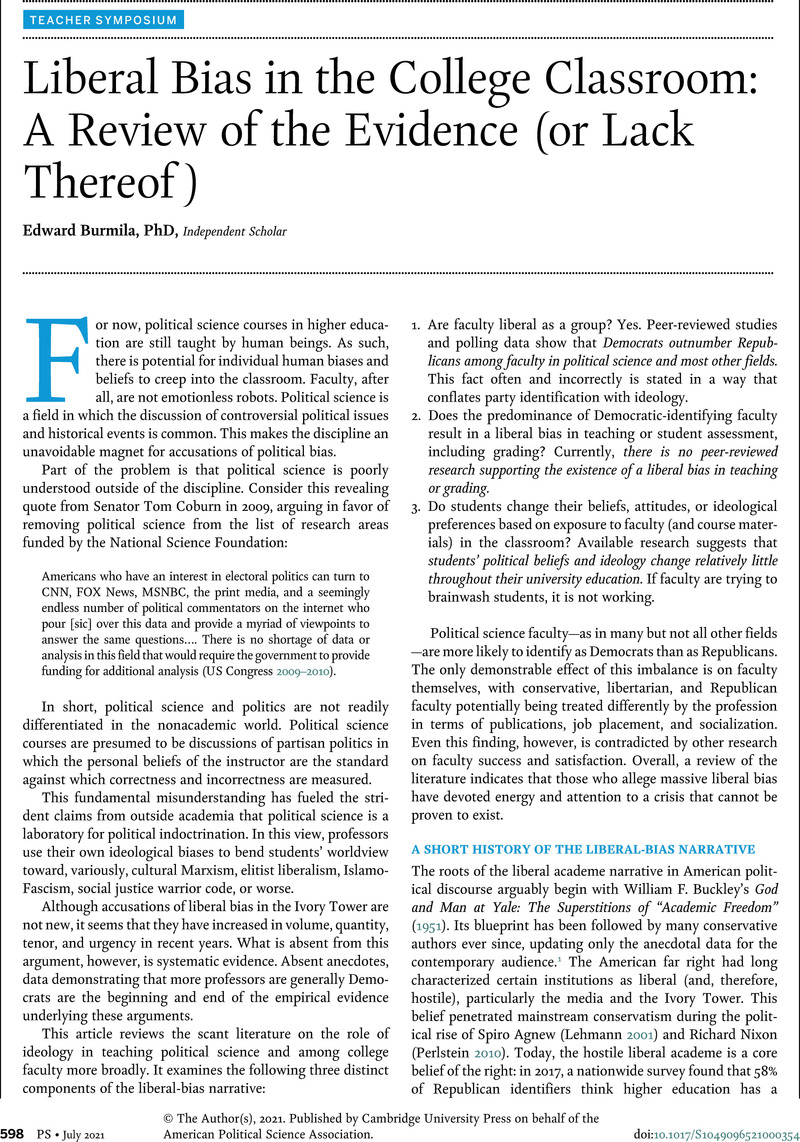Crossref Citations
This article has been cited by the following publications. This list is generated based on data provided by Crossref.
Metzgar, Matthew
and
McGowan, Mary Jo
2022.
Viewpoint Diversity at UNC Charlotte.
Acta Educationis Generalis,
Vol. 12,
Issue. 3,
p.
1.
Parker, Jonathan
2024.
The Role of Higher Education in the Post-Truth Era.
Journal of Political Science Education,
Vol. 20,
Issue. 3,
p.
391.
Oltmann, Shannon
and
Dowell, Meghan
2024.
Social Justice and Indoctrination: Views of Faculty Accused of Bias.
Proceedings of the Association for Information Science and Technology,
Vol. 61,
Issue. 1,
p.
621.
Morelock, Jeremiah
Michelotti, Andressa
and
Uyen, Ly Hoang Minh
2024.
Vaccine Hesitancy and Attitudes Toward Elite Knowledge in the United States During COVID-19.
Critical Sociology,
Vol. 50,
Issue. 2,
p.
317.
Woodzicka, Julie A.
Boudreau, Grace H.
and
Hayne, Sarah L.
2024.
Do professors favor liberal students? Examining political orientation appearance cues and professor bias.
Frontiers in Education,
Vol. 9,
Issue. ,
Rosen, Amanda M.
2024.
Teaching Political Science: A Practical Guide for Instructors.
p.
205.



